WE CANNOT LIVE EASTER WITHOUT ENTERING INTO THE MYSTERY
 Tonight is a night of vigil. The Lord is not sleeping; the Watchman is watching over his people (cf. Ps 121:4), to bring them out of slavery and to open before them the way to freedom.
Tonight is a night of vigil. The Lord is not sleeping; the Watchman is watching over his people (cf. Ps 121:4), to bring them out of slavery and to open before them the way to freedom.
The Lord is keeping watch and, by the power of his love, he is bringing his people through the Red Sea. He is also bringing Jesus through the abyss of death and the netherworld.
This was a night of vigil for the disciples of Jesus, a night of sadness and fear. The men remained locked in the Upper Room. Yet, the women went to the tomb at dawn on Sunday to anoint Jesus’ body. Their hearts were overwhelmed and they were asking themselves: “How will we enter? Who will roll back the stone of the tomb?…” But here was the first sign of the great event: the large stone was already rolled back and the tomb was open!
“Entering the tomb, they saw a young man sitting on the right side, dressed in a white robe…” (Mk 16:5). The women were the first to see this great sign, the empty tomb; and they were the first to enter…
“Entering the tomb”. It is good for us, on this Vigil night, to reflect on the experience of the women, which also speaks to us. For that is why we are here: to enter, to enter into the Mystery which God has accomplished with his vigil of love.
We cannot live Easter without entering into the mystery. It is not something intellectual, something we only know or read about… It is more, much more!
“To enter into the mystery” means the ability to wonder, to contemplate; the ability to listen to the silence and to hear the tiny whisper amid great silence by which God speaks to us (cf. 1 Kings 19:12).
To enter into the mystery demands that we not be afraid of reality: that we not be locked into ourselves, that we not flee from what we fail to understand, that we not close our eyes to problems or deny them, that we not dismiss our questions…
To enter into the mystery means going beyond our own comfort zone, beyond the laziness and indifference which hold us back, and going out in search of truth, beauty and love. It is seeking a deeper meaning, an answer, and not an easy one, to the questions which challenge our faith, our fidelity and our very existence.
To enter into the mystery, we need humility, the lowliness to abase ourselves, to come down from the pedestal of our “I” which is so proud, of our presumption; the humility not to take ourselves so seriously, recognizing who we really are: creatures with strengths and weaknesses, sinners in need of forgiveness. To enter into the mystery we need the lowliness that is powerlessness, the renunciation of our idols… in a word, we need to adore. Without adoration, we cannot enter into the mystery.
Pope Francis, Holy Saturday, 4 April 2015
25 di attivita’ del CAMILLIAN SOCIAL CENTER DI SAMPRAN
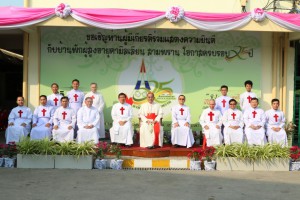


BURKINA FASO






‘When he had finished speaking he said to Simon: ‘Go out into deep water and throw out your nets for the catch!’ (Lk 5:4)
MADRID EXCHANGE



VALENCIA: Camillians and Jesuits together for a project of solidarity
A work of consultation that flanks health-care services.
The Camillians and the Jesuits opened on 1 March of this year in Valencia a new consultation centre for poor people afflicted by family crises, traumatic events, depression, and the pain of migration. This is service to give help that supplements the help offered by the health-care services.
http://news.gesuiti.it/valencia-chi-ascolta-i-senza-voce-un-centro-con-camilliani-e-gesuiti/
THAILAND
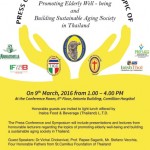


A group of our Camillian religious brothers of the Province of Thailand in recent days has been engaging in a few days of spiritual retreat and formation on the subject ‘Community Life and Fraternal Correction According to the Provocation of Pope Francis about Religious Life’.
The course has been animated by Sister Myrian Kitcharoen, following the model of sharing. Sister Myrian Kitcharoen was Mother General of the St. Paul del Chartre Congregation in Rome for twelve years. As such, she has also been able to share all of her practical experience on the subject of religious life.
THE PHILIPPINES
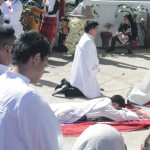


Cf. We here share with you up-dating on, and the ‘Camillian life’ of, the Province of the Philippines through its newsletter – CamUp
TAIWAN
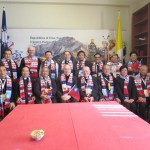


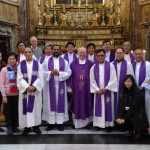


On 12 February of this year the Vice-President of the Chinese Republic of Taiwan visited the Church of St. Camillus: thus was a sign of clear appreciation of, and esteem for, the work, which goes back over fifty years, that the Camillians have been engaged in to help sick and poor people.
BRAZIL – THE LAY CAMILLIAN FAMILY
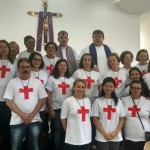


On that occasion Father Leocir Pessini concelebrated Holy Mass together with Fr. Zaqueu Geraldo Pinto, the Master of the Camillian Novitiate and spiritual assistant to the new group.
MADAGASCAR



On Saturday 13 February 2016 about 2,000 pilgrims met at the tower of Madona Salus Infirmorum to celebrate the World Day of the Sick: the pathway of the via crucis; the recital of the rosary; the celebration of the sacrament of reconciliation thanks to the availability of six priests who were present; the celebration of the Eucharist presided over by the Vicar General, Don Gervais Razafitoazaza; and the ministering of the sacrament of the anointing of the sick to those sick people who were present. Special thanks go to the inhabitants of Ilena who with great readiness to help and solidarity helped the sick people to reach the place of the celebration notwithstanding the difficulties that exist in gaining access to it.
ROME – the Generalate House
Meeting for formation for Provincial economic administrators and those who work with them.
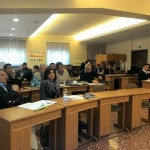


This meeting formed one of the priorities of the General Consulta for this six-year period and its aim was to achieve greater effectiveness in terms of economic transparency and vigilance. It also part of the response to a request of the Congregation for Institutes of Consecrated Life and Societies of Apostolic Life (see the circular letter of 2 August 2014 entitled ‘Guidelines for the Management of Possessions in Institutes of Consecrated Life and in Societies of Apostolic Life’).
The principal focus of the meeting was on formation and practical exercises (in the style of a seminar-workshop) regarding the drafting and presentation (respecting contents, forms and times previously established) of a complete annual report of a Province, Vice-Province or Delegation, as requested by the General Consulta.
About thirty people took part in this initiative: Camillian religious responsible for the economic management of almost all the geographical areas of the Order together with some lay people who work closely with them.
The meeting took place in Rome at the religious house of the Daughters of Charity (Canossians), on 14-18 March 2016.
Cf. Message of the General Superior to those taking part in the meeting of financial administrators of the Order of Camillians INGLESE FRANCESE SPAGNOLO ITALIANO
ROME – the Rectory of the Church of St. Mary Magdalene
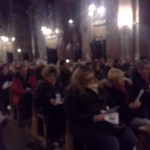


PUBLISHING SUGGESTION
The proceedings of the twenty-first General Assembly of the Members of the Pontifical Academy for Life 2015, entitled ‘Assisting the Elderly and Palliative Care’, have been recently published.
You can download here the paper by Fr. Leocir Pessini on the subject ‘Ethical and Pastoral Guidelines for a ‘Good Accompaniment’’.
NEW THINGS



MEXICO
On 12-18 February 2016 Fr. Leocir Pessini visited our religious brothers of the Camillian community of Guadalajara, Mexico.
Below you can read the message of thanks, good wishes, encouragement and strong call to growth that Fr. Leocir sent to these religious brothers of ours at the end of his presence amongst them.
Cf. Message of the Superior General to the Camillian community of Guadalajara, Mexico ITALIANO INGLESE PORTOGHESE SPAGNOLO
THE PROVINCE OF ROME
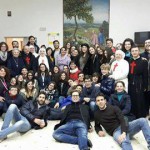


THE PROVINCE OF NORTH ITALY
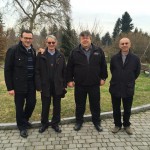


Cf. Message of the Superior General to the Province of North Italy SPAGNOLO INGLESE
AGENDA OF THE SUPERIOR GENERAL AND THE GENERAL CONSULTA
The Superior General, during the week of 29 February-4 March, in the diocese of Joinville, Brazil, animated a course of formation entitled ‘Ética, Bioetica, pastoral em tempos de globalization!’. A large number of diocesan priests and religious took part in the meeting.
On 8-19 March 2016, Fr. Leocir together with Fr. Laurent Zoungrana, the Vicar General, will visit our religious brothers of the Camillian communities of Madagascar, Central Africa and the Ivory Coast.
On Tuesday 22 March 2016, the Superior General and the members of the general Consulta will meet for a day of assessment and planning at the generalate house of the women Ministers of the Sick of St. Camillus (Rome).
On 4-13 April 2016, the Superior General together with Fr. Laurent Zoungrana, the Vicar General, will meet the communities and our religious brothers of the Province of France.
On 15-27 April 2016, Fr. Leocir together with Fr. Laurent Zoungrana, the Vicar General, will visit our religious brothers of the Camillian communities of Anglophone Africa: Kenya, Tanzania and Uganda.
DECISIONS OF THE GENERAL CONSULTA
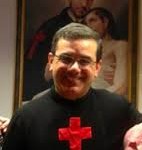


The canonical erection of the ‘Divine Mercy’ Religious House in Pattanakan, Bangkok (Thailand).
The Women Religious THE DAUGHTERS OF ST. CAMILLUS
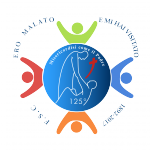


The Women Religious MINISTERS OF THE SICK OF ST. CAMILLUS
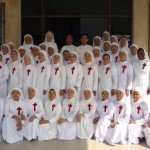


Missionarie degli Infermi



CAMILLIANS ON INSTAGRAM
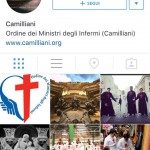


DECEASED RELIGIOUS
‘See, now they vanish, the faces and places, with the self which, as it could, loved them. To become renewed, transfigured, in another pattern’ (T.S. Eliot)
On 15 February 2016, at 23.50, while he was blessing the dead body of a woman in the nephrology department, Fr. Pasquale Anziliero died suddenly as the result of a heart attack at the age of forty-nine.



He was a man consecrated to the Kingdom who was open to the new challenges of pastoral care and who trained himself in the right way, at times with courses on management if he had to work in the administration of a nursing home, and at other times with courses on pastoral counselling in order to improve his ability to listen to sick people. He was an evangeliser who used all forms of information and communications technology to reach as many people as possible. As a man and as a religious he lived the ethic of work: time had to be used and given that in the end there were so many things to do, what always had to be abandoned was sleep.
St. Camillus said: ‘just as a sailor dies at sea, so a Good Minister of the Sick dies in a hospital amongst the sick’. Father Pasquale died exactly like that. He was on duty. Called at 23.00 to bless a woman who had just died, while he was speaking the last words of the Hail Mary he was struck down by a heart attack and collapsed.
Cf. ‘A fine death. In memory of Fr. Pasquale’ (funeral homily by Fr. Edoardo Gavotti)



On 21 February Sr. Firmina Degetto, a woman religious of the Daughters of St. Camillus, went to heaven. Her death took place in Cremona at the community of the clinic of the Institute. Sr. Firmina died at the age of eighty-eight, after sixty-nine years of religious profession.
The Community of the Daughters of St. Camillus have announced the death of Sr. Silvia Callegaro which took place on 26 February 2016 in the San Giuseppe Nursing Home of Brescia. Sr. Silvia died at the age of ninety-eight, after sixty-three years of religious consecration.



In his Camillian ministry he was always, and only, a hospital chaplain, refining how to be near to people who were suffering because of their health. He loved patients and took people to his heart; he formed ties of friendship and fraternity that were fine and long-lasting.
He was a religious of a simple, hidden and humble faith, but also a faith that was profoundly marked by his humanity. He did not love external demonstrations of his faith but, rather, he prayed a great deal, perhaps preferring personal prayer to communal prayer.
Fr. Carmelo did not want to bother anybody; he was shy when paid a compliment; he almost never liked talking about himself; and he preferred to speak about other people or to talk more about things that had been done rather than feelings that he experienced or the wishes that he had in his heart. Of an agreeable character and good company, he had the spirit of a child; he loved bicycling and even more walking races, an amateur sport that he himself practised assiduously as long as he was able to do so. He was a formidable walker! During his retirement he complained of pains in his feet and his legs; in truth what he most wore out were his shoes. It was as if he was stamping his feet, and he certainly suffered the immobility that was imposed on him by his last admission to hospital.
Provincial Father, Siegmund Malinowski (German Province) wants to inform that in the early morning of March 14, 2016 the Lord called our beloved confrere FR. DR. JOHANNES UHRMANN (88) in the eternal home. R.I.P.
Obituary will follow.
Please, remember fr. Johannes in your prayers.
‘Now they live in Christ whom they met in the Church, followed in our vocation, and served in the sick and the suffering. Trusting that the Lord, the Holy Virgin our Queen, St. Camillus, the Blessed Luigi Tezza and the Blessed Giuseppina Vannini, and our deceased religious brothers and sisters, will welcome them in their midst, we commend them in our prayers, remembering them with affection, esteem and gratitude’.
THE HOLY YEAR OF MERCY
The New Humanism in Jesus Christ



We can speak of humanism only starting from the centrality of Jesus, discovering in him the traits of the authentic will of man. It is contemplating the face of Jesus died and risen that recomposes our humanity and also that which has been fragmented through the toils of life or marked by sin. We must not domesticate the power of the face of Christ. His face is the image of his transcendence. It is the misericordiae vultus. Let us allow ourselves to be looked at by him. Jesus is our humanism. Let us always be unsettled by his question: “who do you say that I am?” (Mt 16:15).
In looking to his face, what do we see? First of all the face of an “emptied” God, of a God who has taken on the condition of servant, humbled and obedient unto death (cf. Phil 2:7). Jesus’ face is similar to that of so many of our brothers and sisters, humiliated, rendered slaves, emptied. God took on their face. And that face looks at us. God — who is “the being than which no greater can be conceived”, as St Anselm said, or the Deus semper maior of St Ignatius of Loyola — becomes ever greater than himself by lowering himself. If we do not lower ourselves we cannot see his face. We will see nothing of his fullness if we do not accept that God emptied himself. And therefore we will understand nothing of Christian humanism and our words will be beautiful, cultured, refined, but they will not be words of faith. They will be words that resound of emptiness.
The Christian humanism is the humanism of the “mind of Christ Jesus” (Phil 2:5). They are not abstract provisional sensations of the spirit, but represent the warm interior strength that renders us able to live and make decisions. What are these sentiments?
The first sentiment is humility. “Let each of you in humility count others better than yourselves (cf. Phil 2:3), says St Paul to the Philippians. Further on the Apostle speaks of the fact that Jesus did not consider equality with God a “privilege” (cf. Phil 2:6). There is a precise message here. Obsession with preserving one’s glory, one’s “dignity”, one’s influence must not play a part in our sentiments. We must seek the glory of God, and this does not coincide with our own. The glory of God which is ablaze in the humility of the grotto of Bethlehem or in the dishonour of the Cross of Christ always astonishes us.
Another sentiment of Jesus which gives shape to Christian humanism is “disinterest”. “Let each of you look not only to his own interests, but also to the interests of others” (Phil 2:4), St Paul asks again. Thus, more than disinterest, we must seek the happiness of those who are beside us. Christian humanity always goes forth. It is not narcissistic or self-referential. When our heart is rich and is so self-satisfied, then it has no more room for God. Let us avoid “remaining shut up within structures which give us a false sense of security, within rules which make us harsh judges, within habits which make us feel safe” (Apostolic Exhortation Evangelii Gaudium, n. 49).
Our duty is to work so as to make this world a better place and to fight. Our faith is revolutionary through an impulse that comes from the Holy Spirit. We must follow this impulse in order to go out of ourselves, to be men and women in accord with the Gospel of Jesus. Any life is decided by the capacity to give oneself. It is there that one transcends oneself, that one becomes fruitful.
Another sentiment of Christ Jesus is that of “beatitude”. A Christian is blessed, having the joy of the Gospel within him- or herself. In the Beatitudes the Lord shows us the way. Travelling along it we human beings can reach the most authentically human and divine happiness. Jesus speaks of a happiness that we experience only when we are poor in spirit. For the great saints beatitude has to do with humiliation and poverty. But even in the humblest part of our people there is a great deal of this beatitude: it is that of one who knows the treasure of solidarity, of sharing even the little that one possesses; the treasure of the daily sacrifice of a job, hard and poorly paid at times, but performed out of love for loved ones; and also that of one’s poverty, which however, when lived with trust in the providence and mercy of God the Father, nourishes a great humility.
Humility, disinterest, beatitude: these are the three traits that I wished to present today for your meditation on Christian humanism which is born from the humanity of the Son of God. These traits tell us that we must 


A Church that presents these three traits — humility, disinterest, beatitude — is a Church that is able to recognize the action of the Lord in the world, in culture, in the everyday life of the people: “I prefer a Church which is bruised, hurting and dirty because it has been out on the streets, rather than a Church which is unhealthy from being confined and from clinging to its own security. We do not work for a Church concerned with being at the centre and which then ends by being caught up in a web of obsessions and procedures” (Evangelii Gaudium, n. 49).
We must always remember, however, that authentic humanism does not exist unless it contemplates love as a bond between human beings, be it of an interpersonal, intimate, social, political or intellectual nature. Rooted herein is the need for dialogue and encounter in order to build together with others in civil society. We know that the best response to conflicts of human beings, from the well-known homo homini lupus of Thomas Hobbes is the “Ecce homo” of Jesus who does not recriminate, but welcomes and, paying in person, saves.
One could say that today we are not living an epoch of change so much as an epochal change. The situations that we are living in today therefore pose new challenges which, at times, are also difficult for us to understand. Our time requires us to live problems as challenges and not as obstacles: the Lord is active and at work in our world. Thus, go out into the streets and go out to the crossroads: call all those whom you find, excluding no one (cf. Mt 22:9). Accompany especially those who are on the roadside, “the lame, the maimed, the blind, the dumb” (Mt 15:30). Wherever you may be, build neither walls nor borders but village squares and field hospitals.
PRAYER OF THE JUBILEE IN ENGLISH
HAPPY EASTER OF THE RESURRECTION 2016
The Superior General and Consultors of the Camillians,
together with the Religious Brothers of the St. Mary Magdalene
Community in Rome, renew their best wishes for a happy Easter!





